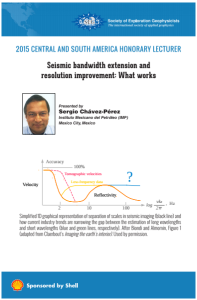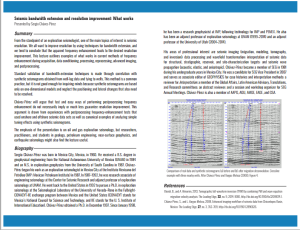Terraza de la Torre de Ingeniería UNAM.
Miércoles, 14 de octubre de 2015.
17:30 horas.
Presented by Sergio Chavéz-Pérez
UNAM-SEG Student Chapter
Sergio, como le gusta que lo llamen, nos visitará el próximo miércoles 14 de Octubre e impartirá una conferencia como parte de su gira por Centro y Sudamérica. A su vez, se dará un tiempo para responder preguntas ya sea sobre el tema en discusión o sobre cualquier otro asunto que les interese.
Los esperamos.
Aquí les dejamos el resumen.
From the standpoint of an exploration seismologist, one of the main topics of interest is seismic resolution. We all want to improve resolution by using techniques for bandwidth extension, and we tend to conclude that the apparent frequency enhancement leads to the desired resolution improvement. This lecture outlines examples of what works in current methods of frequency enhancement during acquisition, data conditioning, processing, reprocessing, advanced imaging, and postprocessing.
Standard validation of bandwidth-extension techniques is made through correlation with synthetic seismograms obtained from well-log data and tying to wells. This method is a common practice, but it is not good enough for inquiring minds because synthetic seismograms are based only on one-dimensional models and neglect the positioning and lateral changes that also need to be resolved.
Chávez-Pérez will argue that fast and easy ways of performing postprocessing frequency enhancement do not necessarily imply or much less guarantee resolution improvement. This argument is drawn from experiences with postprocessing frequency-enhancement tests that used onshore and offshore seismic data sets as well as canonical examples of analyzing simple tuning effects using synthetic seismograms.
The emphasis of the presentation is on oil and gas exploration seismology, but researchers, practitioners, and students in geology, petroleum engineering, near-surface geophysics, and earthquake seismology might also find the lecture useful.

